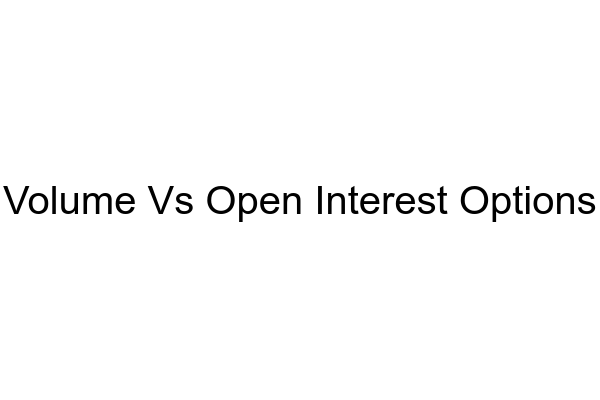Introduction:

Image: phemex.com
In the labyrinthine world of finance, options trading stands as a potent instrument for investors seeking both opportunities and risk mitigation. Understanding the intricacies of options trading can unlock a realm of potential rewards, but it is crucial to decipher the language and strategies that govern this dynamic market. One key aspect that often perplexes traders is the interplay between open interest and volume. In this comprehensive guide, we will delve into the significance of these two metrics, exploring their complexities and implications for informed decision-making in options trading.
Understanding Open Interest
Open interest refers to the total number of outstanding contracts for a particular option. It represents the number of contracts that have been bought and not yet closed or exercised. A high open interest typically indicates a liquid and active market for that option, as it reflects the substantial presence of traders. This implies that there are sufficient buyers and sellers willing to engage in transactions, reducing the spread between the bid and ask prices.
Examining Volume
Volume, on the other hand, measures the number of contracts traded over a specific period, typically a trading day. A high volume indicates a significant level of activity in the market, reflecting the frequency with which options contracts are being bought and sold. Volume is a crucial indicator of liquidity and market sentiment, as it provides insights into the pace and direction of trading activity.
The Interplay between Open Interest and Volume
The relationship between open interest and volume can be intricate and revealing. While high open interest generally suggests a liquid market, it does not necessarily imply a high volume. Conversely, a high volume may indicate significant trading activity but not necessarily a substantial open interest. However, when both open interest and volume are elevated, it often signifies a bullish or bearish trend in the underlying asset.
Implications for Options Traders
For options traders, understanding the dynamics of open interest and volume is essential for sound investment strategies. A high open interest can provide confidence in the liquidity of the market, reducing the risk of slippage or difficulty in executing trades. High volume, on the other hand, reflects market activity and sentiment, helping traders gauge the momentum of price movements.
Leveraging Open Interest and Volume
Traders can leverage open interest and volume to enhance their decision-making process in several ways:
- Identifying Market Sentiment: By observing changes in open interest and volume, traders can infer market sentiment and potential price trends. For instance, a sudden increase in open interest coupled with high volume may suggest a bullish sentiment, while a decline in both metrics could indicate a bearish outlook.
- Assessing Liquidity: A high open interest implies greater liquidity, making it easier for traders to enter or exit their positions without facing significant price impact. Traders can use open interest to identify liquid markets to minimize execution risks.
- Timing Trades: Volume often indicates the pace and intensity of market activity. By observing volume trends, traders can gauge optimal times to enter or exit trades, aiming to capitalize on favorable price movements.
Conclusion:
Understanding the significance of open interest vs. volume in options trading empowers investors with valuable insights into market liquidity, sentiment, and potential price trends. By deciphering the dynamics of these two metrics, traders can make informed decisions and leverage them to enhance their investment strategies. Remember, prudent risk management, due diligence, and ongoing market analysis are crucial pillars of successful options trading.

Image: marketxls.com
Options Trading Open Interest Vs Volume

Image: quantinfo.net






